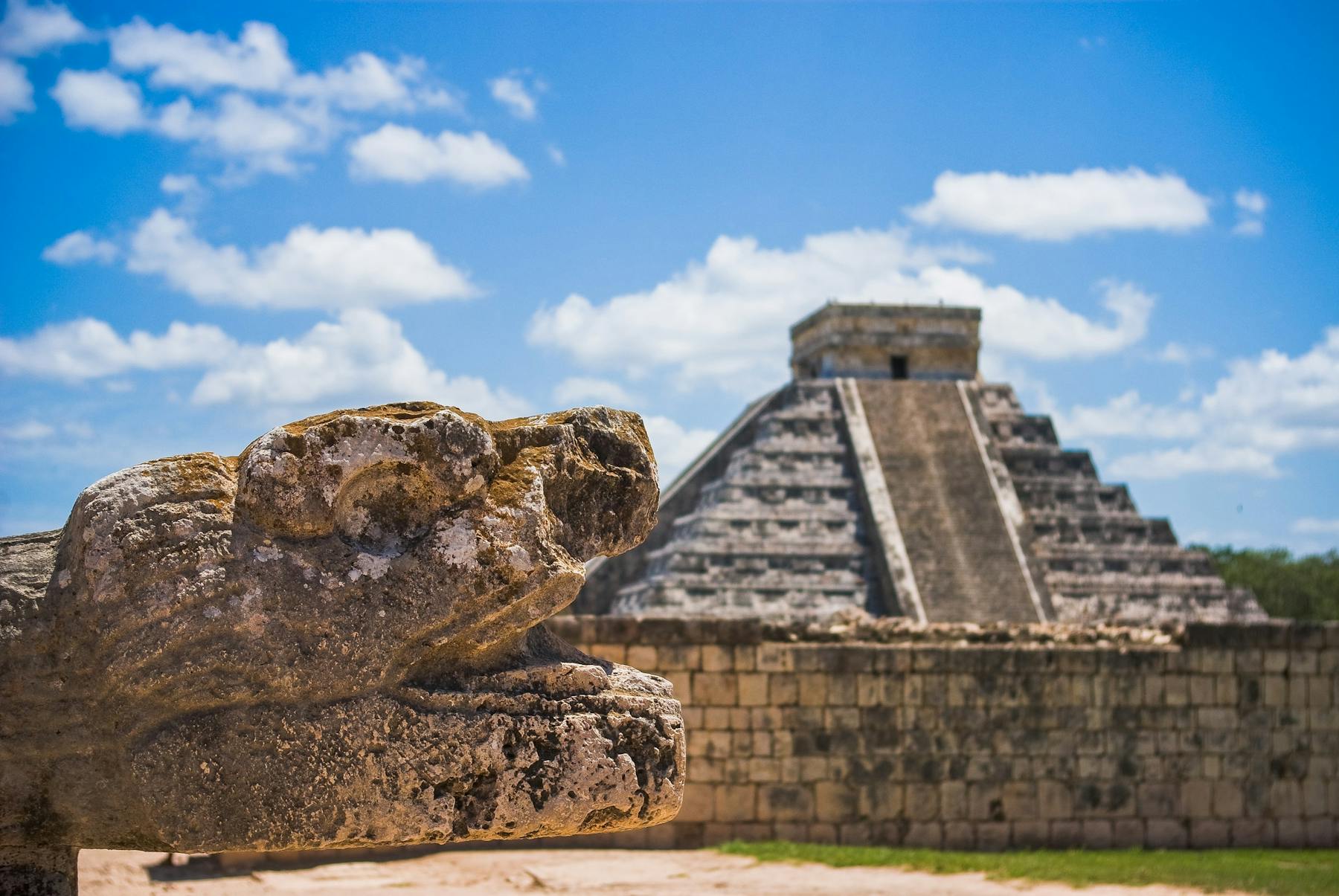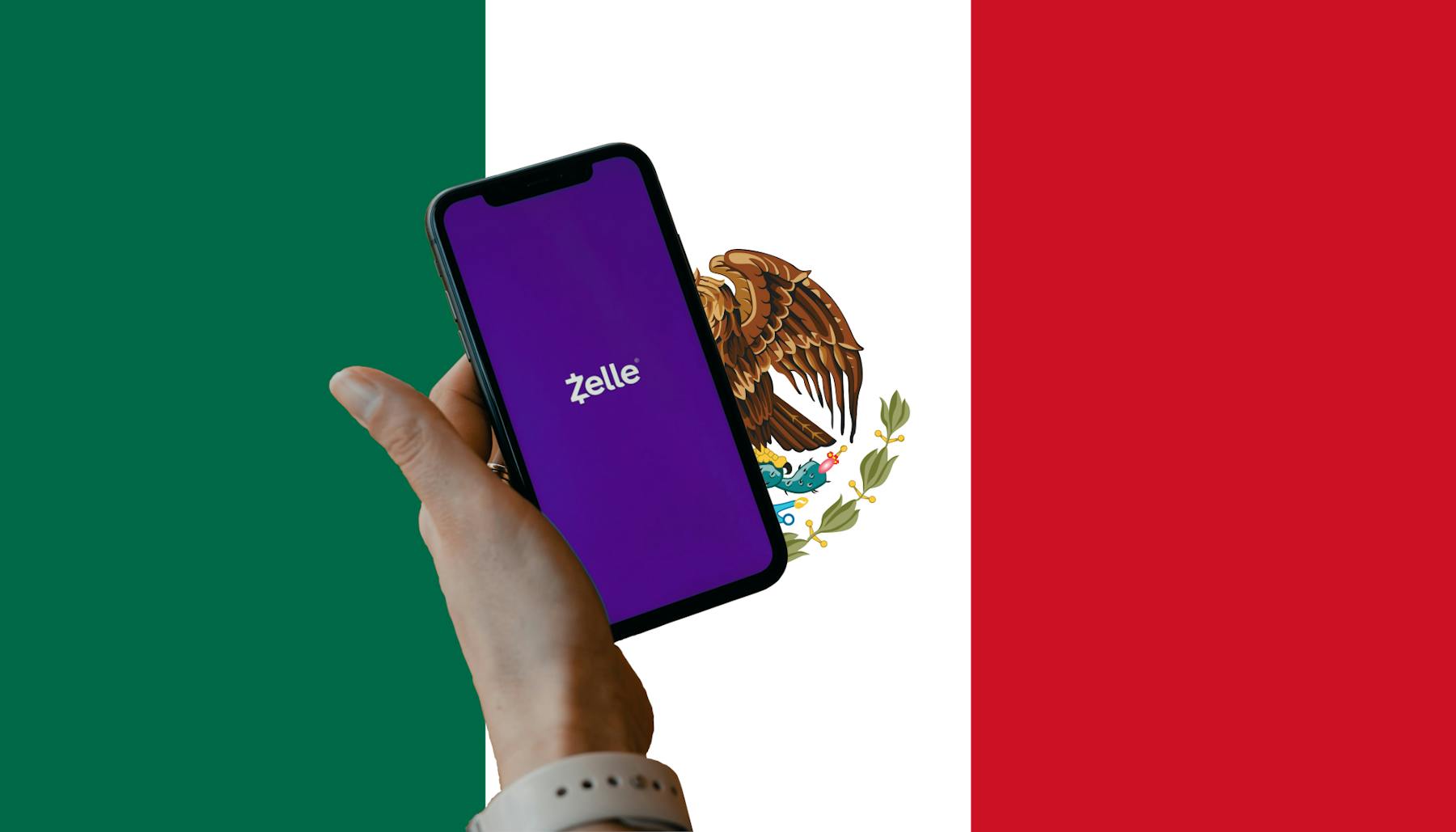 Marv Watson on Unsplash
Marv Watson on Unsplash Moving to Mexico: How-To, Safety, Quality of Life, and More
Links on this page, including products and brands featured on ‘Sponsored’ content, may earn us an affiliate commission. This does not affect the opinions and recommendations of our editors.
Read moreAre you planning on moving to Mexico? Or perhaps you're just tinkering with the idea? From digital nomads and location-independent freelancers to expats working for local or international companies to retirees, Mexico is a top draw for foreigners looking to live abroad. It's a hugely popular country for Americans because it's close to the US yet offers a very different lifestyle at its core. What's more, the country is packed with magnificent coastlines, picturesque mountains, enigmatic cities, excellent cuisine and friendly, welcoming culture.
In this guide, we explore a broad but detailed round-up of the things to keep in mind if you're thinking of relocating to Mexico.
If you're going to Mexico — whether to relocate, holiday, or retire — we recommend opening a Wise Account, which gives you US bank details, among others, and a debit card to spend in multiple currencies (including Mexican pesos and US dollars — exchangeable at very low fees and mid-market rates.) You can even open the account before arriving in Mexico, but you'll need to verify your address in your home country before receiving your card.
Economic Attractiveness
Economic Opportunities
A low monthly net salary of $619 per month with limited economic opportunity. However, Mexico does have a low unemployment rate of around 4.4%.
Cost of living & Purchasing Power
Cost of living is quite low, but so is the local purchasing power.
Tax competitiveness
A 28% tax rate per $80,000 in annual income, sourced locally or abroad.
Prosperity
Poor income equality and economic prosperity rankings.
What Opportunities Are There in Mexico?
Life in Mexico may appear to be paradise when imagined from afar, but you'll nevertheless still find yourself beset with many of the daily responsibilities and administrative tasks that go along with life everywhere. For most new arrivals and expats in Mexico, earning money while living in Mexico generally means income from abroad. Many expats, for example, earn an income from a remote job while living in Mexico as a 'digital nomad', while others live off their retirement savings or pensions form abroad.
Jezael Melgoza on Unsplash

Some expats find work in Mexico, but this is normally at multinational companies or within an international organization where the pay is above the national average. Finding a local job, while possible, generally comes with lower wages.
These include paying bills, opening and managing a bank account, and others. Take a look at the main admin points to keep in mind below:
Paying Bills in Mexico
Despite improvements in being able to pay for more things online, Mexico is still a cash country. While you can technically pay for many bills online (electric bills can increasingly be paid online), many still pay their gas bills in cash. For example, you might read that the local electricity website says you can pay online but then find that the site decides to reject your card for an unclear reason, it does not accept US cards or specific cards from other countries or some other block will arise and trying to pay online becomes a big failure.
One way or another, whether you need to send cash to Mexico or need to send money to Mexico to arrive in a different account, you’ll want to search for the best exchange rate and avoid hidden fees.
How To Open a Bank Account in Mexico
In order to open a bank account in Mexico, you’ll need the following:

- A valid passport or official photo ID;
- Proof of residence, which can be a recent utility bill or a tax receipt from a property bill (the definition of "recent" can be anywhere between one and three months, so we advise you aim to bring the most recent bill you have that is less than three months old);
- A minimum deposit (varies by bank, but generally between $500 and $1000 Mexican pesos);
- A valid visa: This is inconsistent and tricky. Many banks require a temporary or permanent resident visa. Some banks occasionally accept a tourist visa. There is no way to know 100%, so your best bet is to waltz into a branch and ask physically. You’ll need to open the account in person anyway.
Banking in Mexico
HSBC, Santander, BBVA Bancomer, Banamex and Banorte are some of the biggest banks in Mexico. If the bank you use at home has branches in Mexico, this is a great option as it may facilitate the process of opening an account, and if you transfer money via the two bank websites, the per-transaction fees should — in theory — be lower than interbank transfer fees.
Still, you’ll get a better exchange rate sending money to Mexico if you search for the best deal among money transfer services.
Multi-Currency Accounts and Mexican Pesos
You can also manage your money and exchange rates across multiple currencies with options like TransferWise’s borderless account, which supports Mexican Pesos (the account also comes with a free debit card). While the account does not enable you to add Mexican pesos directly, it does offer the chance to hold Mexican Pesos in an account. The account allows you to receive money from other people in four currencies — the US and Australian dollars, Euros and British Pounds and add funds to your own account in 18 currencies. Then, if you’re super savvy and you’ve set up an alert for when the exchange rate is in your favor, you can exchange your money for Mexican pesos and save a bundle with, for example, a good US dollar to Mexican peso rate.
For people with Bank of America accounts, Bank of America used to waive the US$5 dollar ATM fee for withdrawals from Santander bank in Mexico as of 2018, but this is no longer the case. Bank of America still waives the fee if you withdraw funds from Scotiabank locations (but note that you will still be charged a 3% transaction fee). The most up to date details on Bank of America foreign transaction fees and partner back in Mexico is available here.
Healthcare & Safety
Life Expectancy
Average life expectancy at birth of 76 years,
Healthcare Access & Quality
Good quality and affordable private and public healthcare.
Overall Safety
Poor crime rankings and high rates of corruption.
Is Safety and Healthcare Good in Mexico?
Below, we explore what life is like in Mexico in terms of healthcare, and in terms of general safety and security.
Healthcare in Mexico

Mexico revamped its healthcare system in 2004, and overall, it’s considered good. IMSS (Instituto Mexicano de Seguro Social) is Mexico’s social security system, and within it sits the national healthcare system. If you’re employed on a local Mexican contract, you’ll automatically enrol in this healthcare system and pay contributions. If you have a temporary or permanent resident visa, you can apply to this system voluntarily (rates vary by age). Additional information is available on the official IMSS site (in Spanish.) Note: if you are a retired US citizen, be aware that you are not covered by Medicare in Mexico, regardless of whether you live in or are travelling around the country.
The process to apply for and receive healthcare in Mexico can vary significantly depending on whether you're employed or retiring in Mexico or whether you're opting for private or public options. To learn exactly what to expect along the way, take a look at VisaGuide.World's in-depth guide to find out the key facts about health insurance for expats in Mexico.
Beyond public healthcare, several private healthcare options are available to expats. These include both plans from local and international providers, and it gives access to the even higher quality of healthcare available in Mexican private hospitals.
Safety and Corruption in Mexico

Don’t let the media fool you — it is safe to live in Mexico. The violent crime that hits the news tends to affect those involved in illegal activities themselves. In most cases, this does not affect the average visitor or resident, especially if you use common sense. Pickpockets and bag snatchers are issues on crowded subway cars and buses, public transportation stops, markets, busy streets, crowded plazas and airports. In short, be smart and aware of your surroundings. If possible, travel during daylight hours, be more careful after dark and stick to toll roads when driving.
Corruption, on the other hand, is a significant issue in Mexico. The topic warrants its own discussion, and if you are keen to understand how widespread corruption is, it's worth doing a bit of research and reading the most recent news reports on the subject. After all, it's a good idea to be aware of a country's political and socio-economic challenges you are considering moving to. The BBC Mexico country profile provides a solid, updated overview of Mexico and includes a snapshot of the current corruption situation.
What are the best places to live in Mexico? Where do many foreigners live? This is subjective, of course, but foreigners definitely favor certain areas over others. For example, if you’re from the US, there are core places Americans often move to in Mexico, but these tend to be some of the more expensive places to live, too.
Migration Process
Ease of migration
Easy to migrate to, with many visa options available for foreigners.
Ease of acquiring citizenship
Foreigners can obtain Mexican nationality, including dual citizenship, relatively easily.
How Easy Is It to Move to Mexico?
Before you arrive in Mexico, you'll need to make sure that you are, in fact, eligible to stay in the country for an extended period of time. Below, we go through the major types of visas and explore what's required to obtain them:

Tourist Visa (Visa Visitante, aka FMM)
Citizens of many countries, including the United States, Canada, Japan, Switzerland, the United Kingdom and the European Union, are issued an FMM upon arrival. US citizens, for example, can stay in Mexico for up to six months without needing to do anything official. The FMM is a 180-day out of every six-month visitor visa.
Everyone else must obtain a tourist visa prior to arrival from the relevant Mexican embassy or consulate in their home country. This visa is purely for tourism purposes and cannot be renewed.
Temporary Resident Visa (Visa de Residente Temporal)
This is intended for people who want to live in Mexico for more than 180 days every six months. It is issued for one year, can be renewed for up to four years and allows multiple entries into Mexico. The main element of this visa is that you need to prove you have an adequate amount of funds to support yourself while living in Mexico — the amounts change every year and are variable according to the applicant's situation (for example, there are different rules if you own property in Mexico, have family ties to the country, are retired or not, etc.) The amount is tied to the minimum wage salary in Mexico and is specified in pesos each year.
As of 2018, if you are retired and want to live in Mexico, you need to prove that you have a monthly income of roughly US$1,400.00 (about 10 months of the minimum wage) or your average savings balance over the past year must equal about US$23,000.00 (more or less 13 years of the minimum wage.)
Permanent Resident Visa (Visa de Residente Permanente)
Want to live in Mexico for more than six months, live there indefinitely and potentially apply for citizenship? This is the visa you need. But again, there are many variables here, and in some cases, you can apply for this visa if you have never had a temporary residence visa (if you have family ties or are retired, for example). But in many cases, before you apply for this visa, you must have held a temporary visa for several consecutive years.
What’s it like for an American living in Mexico? What about Americans retiring in Mexico?
By far one of the largest expat communities in Mexico consists of Americans — according to the 2010 census by INEGI (Instituto Nacional de Estadística, Geografía e Informática, or the National Institute of Statistics, Geography and Informatics) there are officially between 738 thousand and one million Americans living in Mexico, the largest immigrant group in the country. Many Americans moving to Mexico like the fact that it’s close and well-connected to the US, both in terms of miles, airports and times zones (handy for remote workers and digital nomads working for US-based companies). What's more, it’s a popular country for American retirees. Retiring in Mexico while drawing American social security (pension) payments means that the money generally goes a lot further than it would in the US, enabling retirees to enjoy a better quality of life than back home while still living on social security from the US.
Quality of Life
Quality of life
Exquisite and diverse climate, topography, and biodiversity, with jungles, mountains, deserts, and beaches.
Happiness
Locals and expats report good levels of happiness and satisfaction.
Climate
A relatively good climate with a low risk of natural disasters.
Bureaucracy
Bureaucracy is slow and can stifle access to public services.
What's Life Like in Mexico?
First things first. When it comes to quality of life, pros and cons are highly subjective. As much as there are more objective factors impacting livability (e.g. climate, crime rate, healthcare, etc.), being content while living abroad is also a lot about your attitude and how you approach the things you like or don't like. Be open. Accept that things won’t be like they were at home and that no country is perfect — there will always be reasons why you may not want to move to Mexico.
Then again, adapting, integrating and discovering a country — including both its best features and its most challenging elements — is part of the adventure of relocating abroad.
Weather in Mexico

When most people think about the Mexican climate, sunny, warm days usually come to mind, and overall, Mexico has only two distinct seasons, rainy (May to October) and dry (November to April.) The country boasts an average of seven hours of sun per day throughout the year, but this is highly variable in terms of the average temperature. But this also means that Mexico offers climates to suit (most) people, from tropical (and also hurricane-prone) beaches with surfing, kayaking and other water sports on offer to cactus-filled deserts with incredible wildlife to small cities adjacent to snow-capped mountains, where you can enjoy mild winters and embark on day hikes.
Mexico City is subtropical and offers warm summers and mild winters. At the same time, San Miguel de Allende (a popular place to live for foreigners) in the highlands is temperate — dry and sunny most of the year — with chilly nights in winter but warm summers. And if you’re chasing the sun, Acapulco, Puerto Vallarta, and Cancun are some of the sunniest spots in the country. And all three have beaches, too.
Transport and Mobility in Mexico

Larger cities like Mexico City and Monterrey have extensive metro systems, and it’s easy to get around by public transport. Beyond these two cities, nearly all substantial cities and towns have a local bus system. Bus systems run by private bus companies are excellent for longer distances, and many routes offer three tiers of service. The top tier is like business class on an aeroplane — think seats that go flat and super-wide seats. Bottom line: the top two tiers offer a far superior service than bus travel available in the US and UK, such as Greyhound or National Express.
Suppose you’re keen on owning a car and driving around the country. Mexico’s road network is fairly extensive and is generally in good shape, especially on the major toll roads that provide routes between larger cities.
Beach Life in Mexico

Cancún, Playa de Carmen and Tulum on the East coast facing the Caribbean are popular and offer a serious tropical vibe and easy access to Mayan ruins. Cancun also boasts an international airport with connections to over 25 countries, including frequent connections to the US.
Over in the west, favorites include Puerto Vallarta and Mazatlán, which face the Pacific and offer rocky topography interspersed with crescent beaches. Puerto Peñasco is also a big draw for foreigners. It sits on the Gulf of California and is only an hour from the Arizona border.
Inland Life in Mexico

San Miguel de Allende is a huge art and cultural hub and is hugely popular among foreigners who love its cobbled streets, colonial architecture and pretty, hilly terrain. Colonial, colorful and sitting pretty in the mountains, Guanajuato is also a big draw as is, UNESCO-designated, elegant Oaxaca, which is also a culinary destination and popular among foodies.
Is it really cheaper to live in Mexico? Well, it depends where you are moving from and what part of Mexico you move to. If you're coming from a major city in North America, Western or Central Europe or Australia — yes, it’s cheaper. For example, if you’re moving from the US to Mexico, you’ll find that your money tends to go a lot further when it comes to everyday costs such as petrol, groceries, a cup of coffee, a haircut, public transport, taxi fare and gym membership. Unless you are 5-star-dining it with pricey French champagne every night, eating out and drinking is also far less expensive. So is rent, though common sense applies. (Want a 10 bedroom villa overlooking the Pacific with a butler and private chef? That’ll cost you, but it'll probably run less than it would back home.)
It also depends on where you want to be and what type of lifestyle you're craving. As a rough guide, according to Numbeo, a one- and three-bedroom apartment for rent in the city center of San Miguel de Allende costs around $12,486.00 and $25,415.00 Mexican pesos (US$656.00 and US$1,335.00). In contrast, in the city center of Mexico City, this will run around $11,248.00 and $21,432 Mexican pesos (US$591.00 and US$1,126.00). A three-course meal at a mid-range restaurant for two in either city is about US$26.00 ($500 Mexican pesos). According to Nomadlist, coworking spaces in San Miguel de Allende and Mexico City are US$89.00 ($1700 Mexican pesos) and US$614.00 ($11,670.00 Mexican pesos) per month. And per GlobalPetrolPrices.com, a US gallon of gas (petrol) currently costs roughly US$3.80 ($73.00 Mexican pesos) in Mexico (or about US$0.95 or $18 Mexican pesos per liter).
A Word on Visas
Does anyone really want to deal with bureaucracy? No, but it’s kind of like the dentist — you can only ignore it for so long, but if you want to visit Mexico and potentially live in Mexico, eventually you’ll need to deal with it. Try to think of it like this: engaging with local bureaucracy is often a window into local culture. Also, note that you must apply for the visa at the Mexican consulate or embassy outside of Mexico in the majority of cases. If you’re wondering where the information is about the Mexican FM3 Visa (frequently called the retiree visa) or the FM2 visa (also known as the immigrante visa), those have been discontinued and replaced by the temporary and permanent visas listed below). For the most up-to-date information, visit www.gob.mx (a Spanish-only resource for official Mexico-related government resources.
Entry Requirements
You need a valid passport to enter Mexico, with a few exceptions. For example, if you're driving from the states, a few US states offer enhanced driver's licenses which may be used to enter Mexico by land only; for all the other US citizens, you must present a US passport or passport card. Take note that all US citizens need a passport to go to Mexico by air.
Our Guides About Living Abroad






Why Trust Monito?
You’re probably all too familiar with the often outrageous cost of sending money abroad. After facing this frustration themselves back in 2013, co-founders François, Laurent, and Pascal launched a real-time comparison engine to compare the best money transfer services across the globe. Today, Monito’s award-winning comparisons, reviews, and guides are trusted by around 8 million people each year and our recommendations are backed by millions of pricing data points and dozens of expert tests — all allowing you to make the savviest decisions with confidence.
Monito is trusted by 15+ million users across the globe.
Monito's experts spend hours researching and testing services so that you don't have to.
Our recommendations are always unbiased and independent.